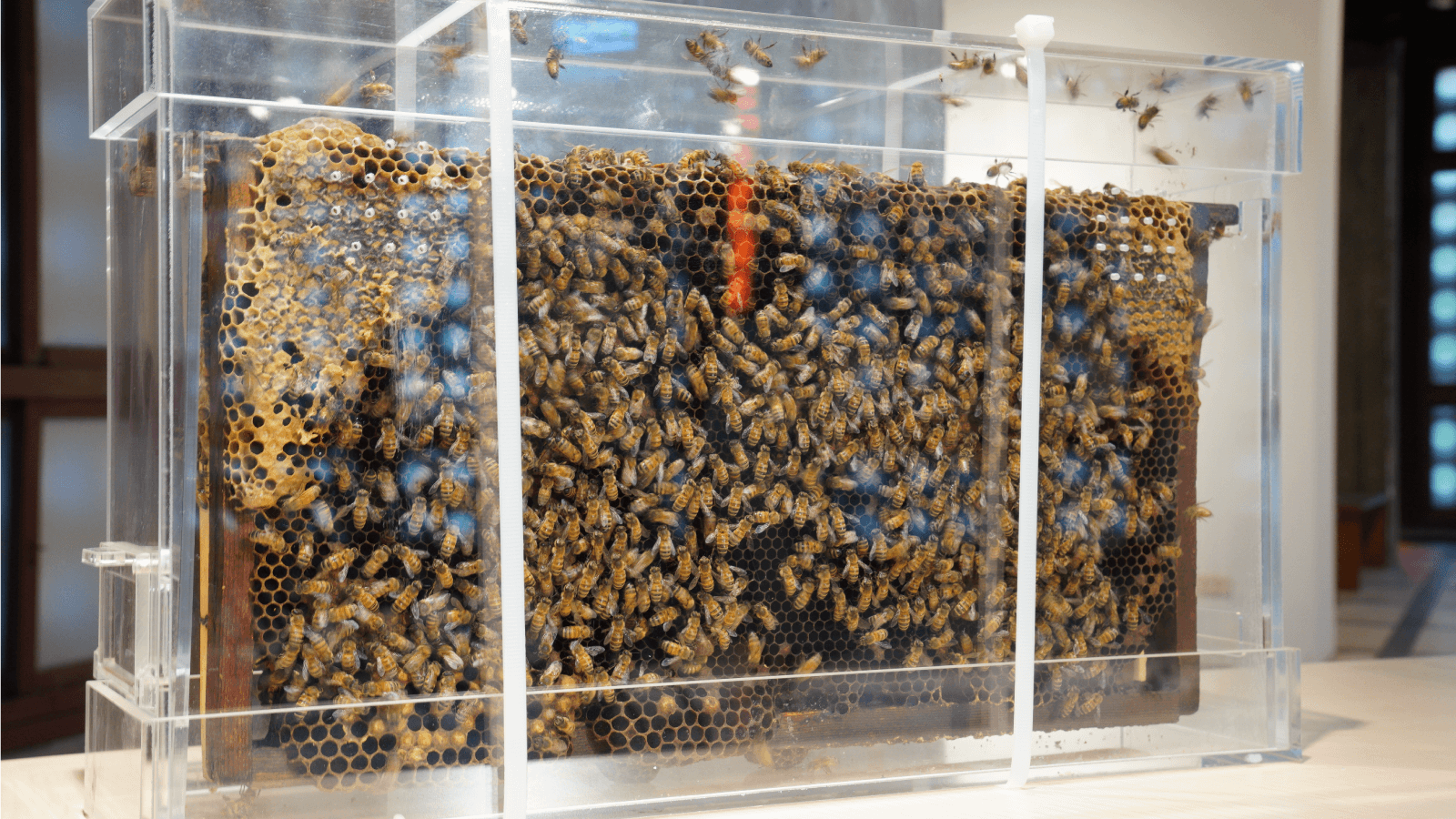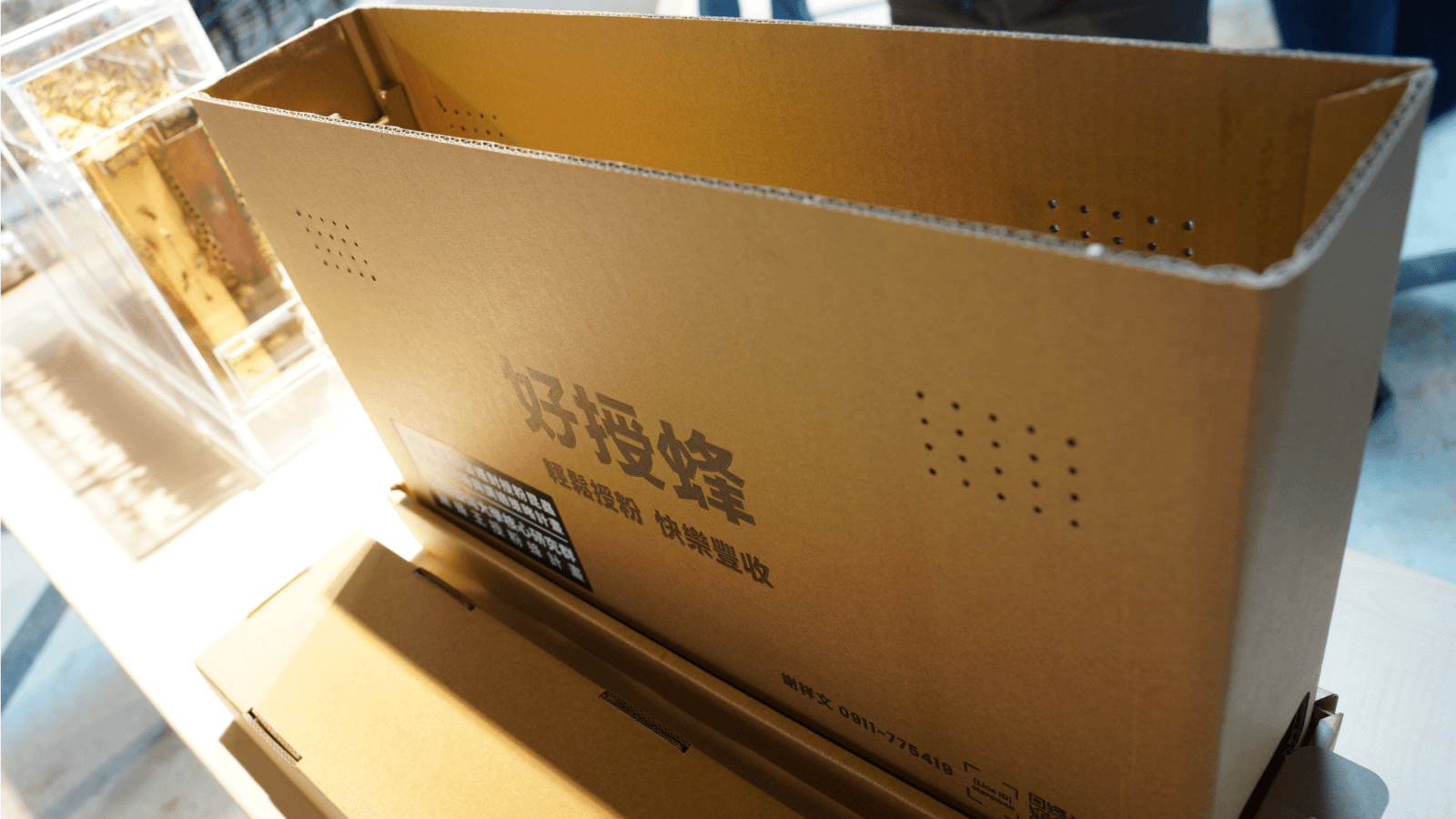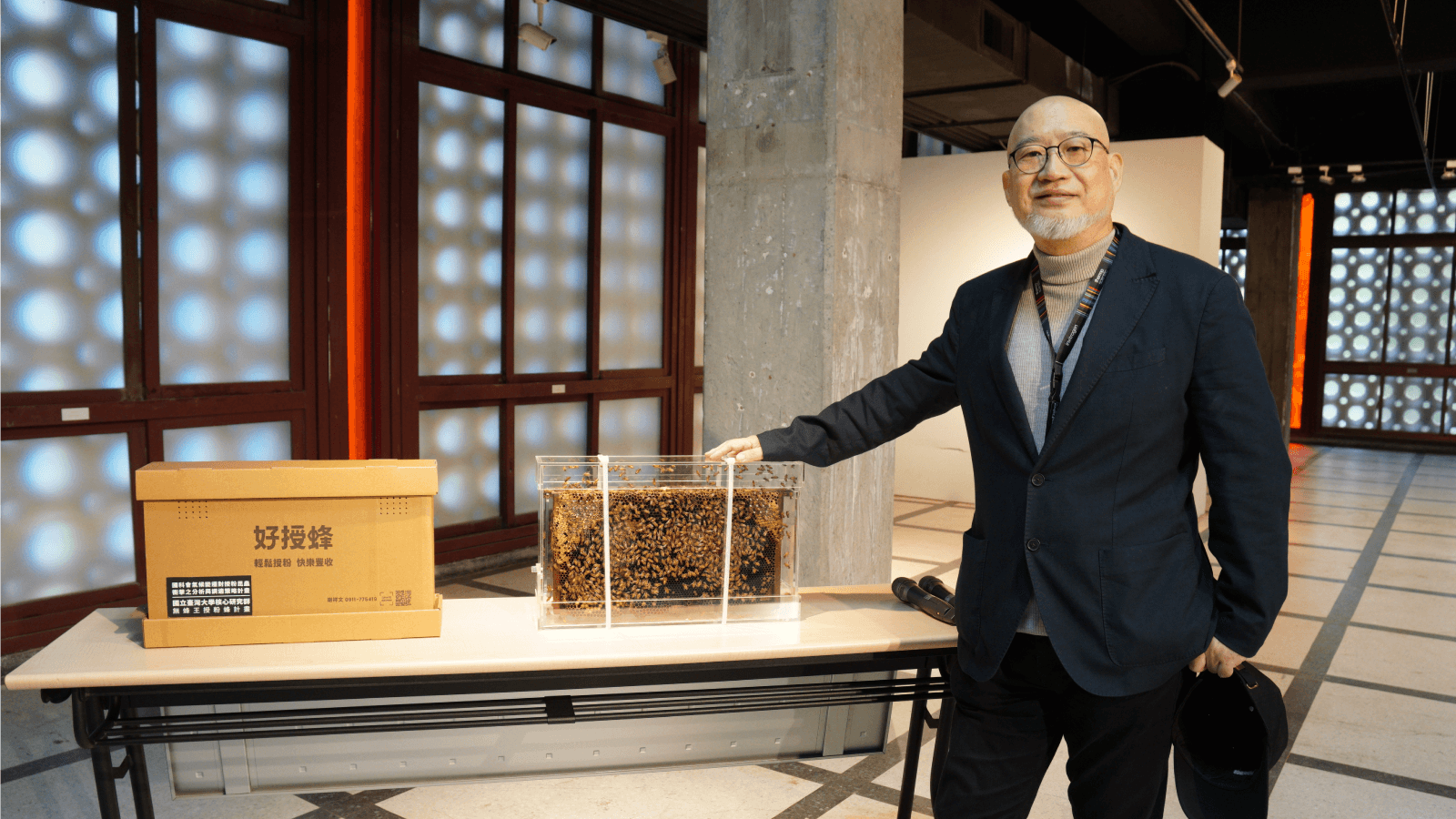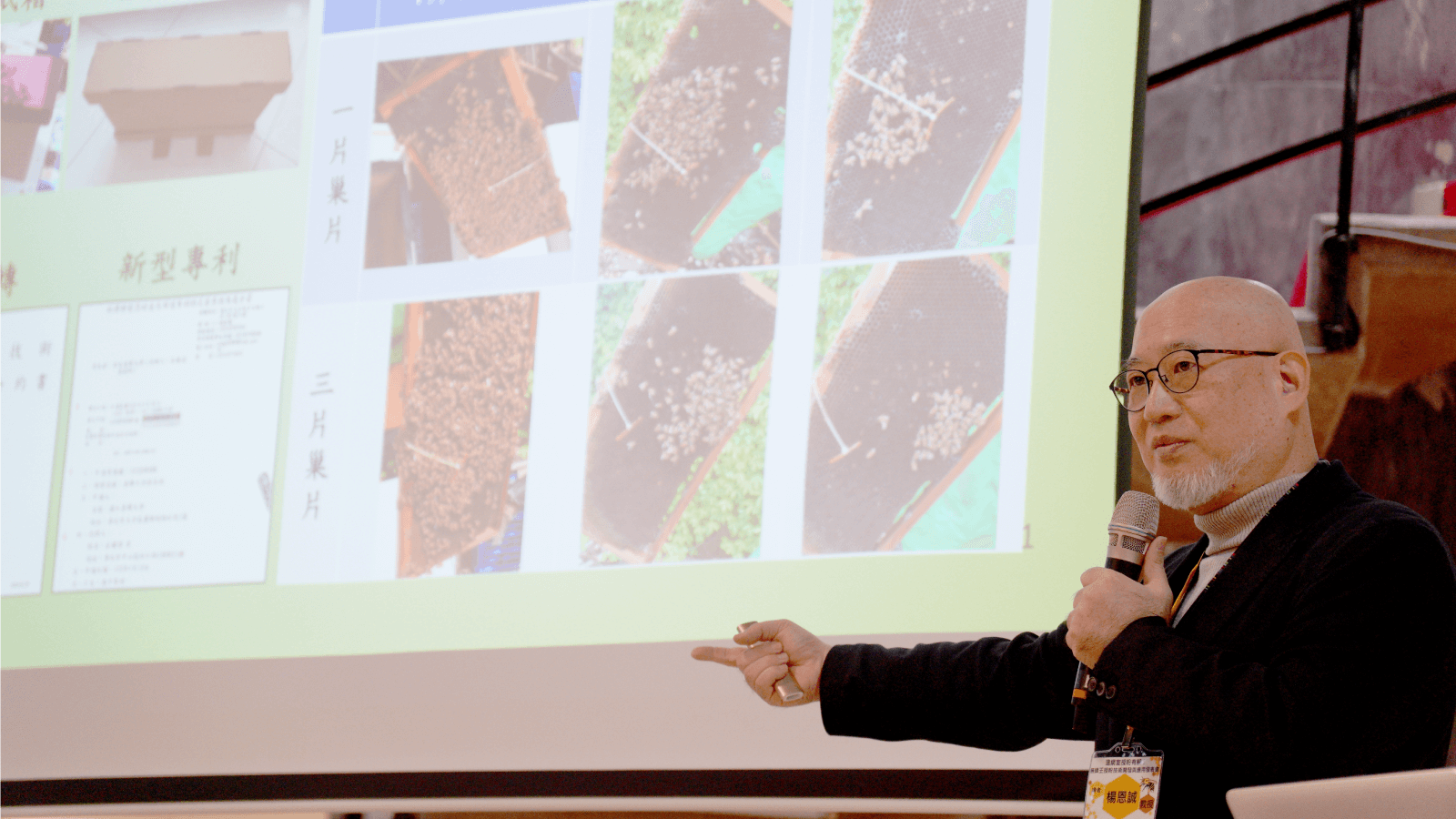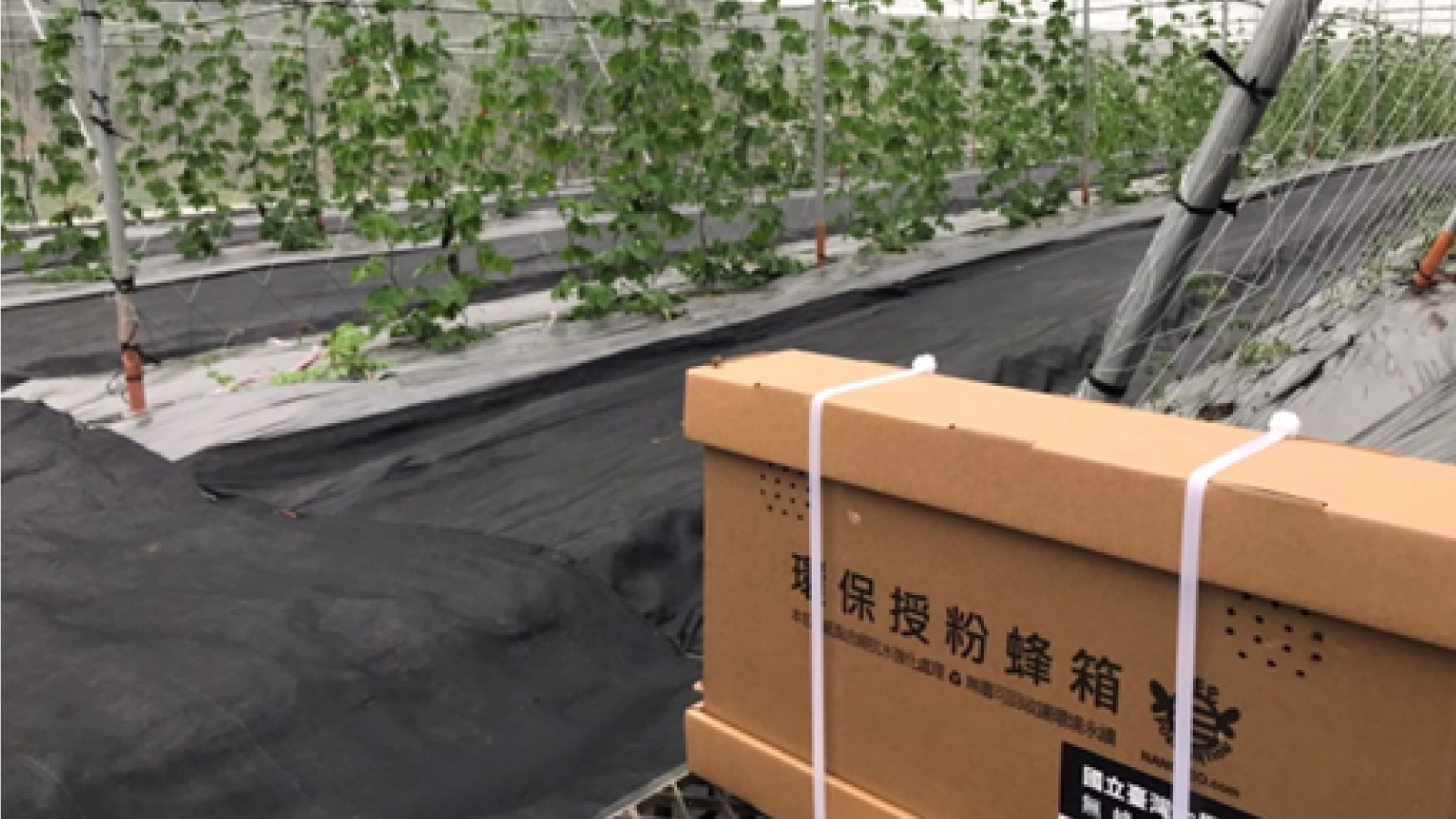Prof. En-Cheng Yang and his research team at NTU’s Department of Entomology have developed a new technology for pollination by replacing queen bees with their pheromones, which can solve a long-standing problem faced by farmers—the lack of bees to pollinate their crops.
Prof. Yang has significantly improved on the traditional method of indoor pollination in greenhouses, which often involves using overcrowded beehives, which can lead to bee attacks on farmers when feeding the bees. He achieved this result by leaving only one honeycomb in the hive with pheromones to replace the queen bee, then placing the beehive in greenhouses to pollinate the plants. The study found that by populating the honeycomb with worker bees and pheromones is sufficient to create a stable bee colony for pollination. In further tests conducted in 0.19 hectares of muskmelon greenhouse, the team found that just a few bees were needed to pollinate the area. The test also showed that a single pheromone can keep the colony stable and viable for up to three months.
The beehive design has been patented and commercialized. It is now used in 88 greenhouses where 12 crops are raised, including muskmelon, mino melon, strawberry, sponge gourd, bitter melon, cucumber, jujube, zucchini, blueberry, nectarine, and Peruvian groundcherry with promising results. Besides increasing crop yield and quality, Prof. Yang’s innovation also fosters the development of the pollination industry while avoiding the potential ecological crisis of relying on the import of bumblebees. This innovation demonstrates the potential for combining academic research with practical applications in agriculture.
Team members demonstrating how to place the queenless beehive box in the greenhouse. It has been proven to keep the colony stable and viable with one single pheromone for three months. The box has been patented and commercialized.

The queenless beehive box developed by Prof. En-Cheng Yang and his research team at NTU’s Department of Entomology replaces the queen with its pheromone. Once industrialized, it will solve the farmers’ long-standing problem of bee shortage.
